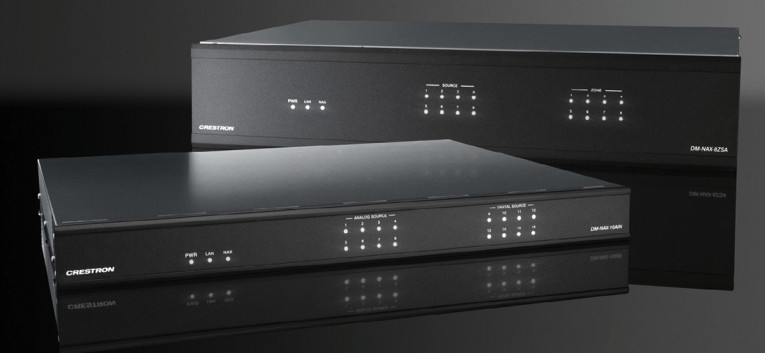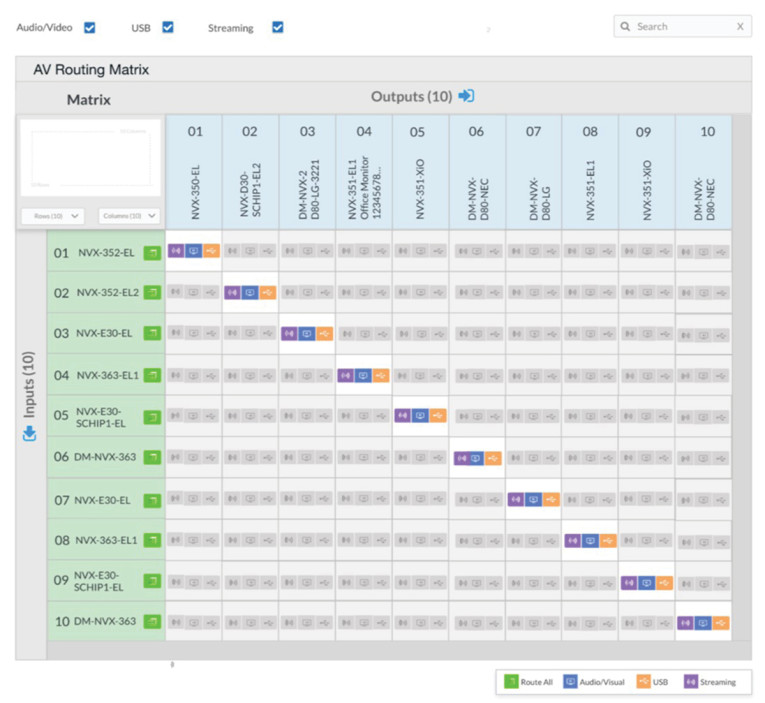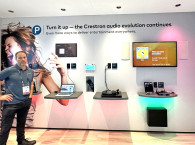
Since its founding in 1948, one of the more impactful aspects of the Audio Engineering Society (AES) is the ongoing work of the nonprofit’s Standards Committee. Its mission, according to the AES:
AES Standards bring the industry’s engineering teams together to facilitate new technologies, improve performance and ensure interoperability. AES3 (2-channel digital audio), AES10 (MADI), AES14 (analog XLR pin-out), AES67 (networked audio) — AES Standards have contributed to your operations, making your work more successful, improved your workflow, and saved your production, more times than you realize.
Standards are an interesting concept. Ideally, the goal is to level the playing field for multiple parties to create and proliferate products utilizing a shared technology. At Crestron, we are constantly working with forums and standards bodies to ensure our products are developed to integrate seamlessly into all of our customers’ complex environments. A great example of this is our contributions to the video side of things, specifically with HDMI and HDCP — by working with the standards bodies we’ve been able to influence improvements in interoperability and video handshakes. These improvements not only enhanced our products but allowed the industry as a whole to benefit from our testing — we’ve created a feedback loop in which we share our findings with the standards bodies. That’s the beauty of those bodies: They are constantly evolving and improving based on implementation.
AV has been a discipline that has seen its fair share of standards: The good (e.g., DVD and Blu-ray), and the challenged (e.g., Betamax and HD DVD). It’s been a truism throughout the history of various standards that the best solution doesn’t always win out in the end. AV-over-IP is now opening up another similar challenge. On the plus side, we at least have a common interface with Ethernet on Cat5e (or greater) cabling, but the software layer that runs on the network is a whole different picture. Unfortunately, there are many competing protocols running on the network to move AV data, and the industry has been challenged to make all these platforms play together nicely.
Most recently, Audio-over-IP (AoIP) has emerged as a popular method of distributing audio at a highly scalable level by leveraging the network. Enter the AES and the AES67 standard. AES67 is a suite of requirements defined to facilitate the interoperability of AoIP platforms. Popular AoIP standards that existed well before AES67 was created are Dante, Ravenna, Livewire, and QLAN. The AES looked at the common underlying technology across the various AoIP platforms noted above and built a common denominator of requirements, including a synchronization method, audio formats, and transport protocols at the highest level.
Audio Synchronization
Of these requirements, the one worth highlighting is audio synchronization. The key concern of distributing audio on a digital network is to make sure that all the audio endpoints (amplifiers, speakers, etc.) are receiving that audio at precisely the “right” time, otherwise beyond egregious issues such as clicks, pops, and echoes, you also risk the quality of the audio integrity due to phasing issues. Luckily, the Institute of Electrical and Electronics Engineers (IEEE) created a common technology called precision time protocol (PTP) that defines a clock synchronization technology (IEEE 1588) that many AVoIP platforms have adopted as the preferred method to line up their clocks to provide synchronous audio on the network. Without this core technology on all AVoIP products, AES67 would not have been possible.
THE DM NAX AoIP Technology
In 2020, Crestron launched DM NAX AoIP technology, and rather than complicate the matter with yet another competing standard, we embraced the AES67 standard and built our solution around it (Photo 1). For those who haven’t dabbled with AoIP technologies such as Dante yet, one of the most critical differentiators that Dante (created by Audinate) brings to the table is a full suite of software applications that simplify controlling and monitoring Dante AoIP audio endpoints. Dante has a tool called Dante Controller that can run on any personal computer and, when deployed, automatically discovers all the Dante AoIP endpoints and builds a dynamic matrix of inputs and outputs. The other commercial solutions have created similar tool sets, and this is great for use in the wheelhouse of those platforms — but it’s not helpful when using other AoIP standards. This is where AES67 helps bridge the gap, as when platforms are put into AES67 compatibility mode, it allows them to interop.

DM NAX receivers.
While it’s certainly true that AES67 brings a great many benefits to the table, there are downsides. The platform omits a few critical pieces—namely, the enforcement of discovery and a universal method to make and break connections. This omission means that it can be much more difficult to find all the AoIP devices on a given network. Additionally, if you could find those devices, you would then struggle with sending and receiving audio between them.
With Crestron’s DM NAX technology, we have differentiated the product by using all the greatness of AES67’s interoperability but adding in the missing parts: discovery and routing. DM NAX is new as a solution on dedicated audio devices, but the fact is we first implemented this core DM NAX technology on our AVoIP platform DM NVX.
DM NVX devices were built to carry HDMI sources to HDMI endpoints through the network, so we evolved the DM NVX platform to break away the audio from the video flow and insert or extract that to dedicated audio components by way of the DM NAX technology. The result: When you build a Crestron AVoIP solution today, you can plug in your various HDMI sources into DM NVX transmitters, and then you can output the audio to DM NAX receivers (Photo 2).

Without the additional technology that Crestron built on top of AES67, one would not only struggle to find all the transmitters/receivers on a network, but it would be very challenging to route the AV traffic. Historically, AES67’s interoperability would require you to log into the web UI of the receiving endpoints and select what audio stream to listen to. This is because AES67 transmitters are putting out network audio when enabled, and at that point, it’s the receiver’s responsibility to select the stream. Even if one were to use AES67 compatibility mode with Dante, you’d still have to juggle a secondary interface to make the “link” — again, this is because one can transmit audio out blindly, but the heavy lifting is on the receiver. It’s tasked to find and select what it wants to listen to.
Figure 1 illustrates the manner in which all this is simplified on Crestron DM NAX/NVX devices. The Matrix finds all the DM NAX sources and receivers and allows one-click routing between them. This was the primary motivator for Crestron to build DM NAX technology: There was tremendous potential in AES67, and Crestron recognized it and took it to the next level.

Loftier Aspirations
Beyond solving the “boots on the ground” issues of interoperability, there’s something loftier at work here. The general benefits of standards go well beyond making the dealer/installer’s life easier. They benefit the consumer, too — when a variety of devices are assured to “work and play well” with one another, that can inspire customer confidence across an entire industry. For example: A consumer who knows that all the equipment in a system — no matter the brand — will operate together in a manner to deliver the audio result they desire can well become a repeat customer.
Upgrading single devices over time is much less overwhelming than replacing an entire system when the aspirational consumer goes hunting for a better experience. (There are issues of cost, convenience, and sustainability that come into play, too. Note what the EU has to say about standardizing devices to the USB Type-C charging port.) With AV over IP, the whole benefit of a shared network infrastructure for interoperability is reliant on these standards.
Standards also allow a framework in which to create new products instead of starting from scratch. They provide foundational baselines for further innovation. Orson Welles allegedly said, “The enemy of art is the absence of limitations.” The same might be said of technology without standards. That is, after all, the underlying principle: A universe of devices that cannot talk to one another is simply chaos.
This article was originally published in audioXpress, February 2023
 About the Author
About the AuthorEkin Binal is the Director of Product Management AV Solutions at Crestron Electronics, responsible for delivering innovative audio/video products across residential, commercial, and enterprise markets. Ekin leads Crestron’s initiative to modernize audio connectivity, control, and management for a truly integrated experience. Ekin is an industry veteran with more than 15 years of experience in research, development, technical management, product development, and generating new revenue streams. His diverse background ranges from chip design at IBM and product development at BICOM to serving as the VP of Business Development at Sonavox.






